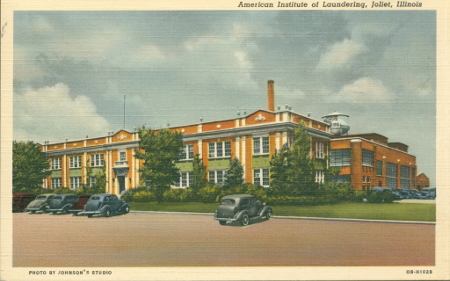State-of-the-Art is a Moving Target
Marcia Todd remembers the days when people toured the American Institute of Laundering like tourists to see what was new and exciting. She served as a tour guide in the 1950s.


By Marcia Todd
My first impression as I looked from the viewing balcony for this world showcase laundry was a sea of pink uniforms worn by women in constant movement. That was the American Institute of Laundering demonstration plant, the model other laundries tried to copy.
When it opened in 1929, the AIL was the 6th largest trade association in the U.S. Its Joliet, IL headquarters was officially opened by President Hoover breaking a beam of light in the oval office.
I got to know this plant well during my time at AIL in the 1950s because I became a guide for tour groups. Here are two highlights of the tour that are almost unbelievable today.
Six very large washers lined one wall. When one completed its load, the dripping metal wash basket was hoisted high in the air and moved to an extractor, which spun for about five minutes. Then the load was dumped into a dryer. The floor around the washers was always wet and the washmen wore rubber boots. Visitors from around the world were impressed by this technology.
The second most popular sight for visitors was what took place at the back of the flatwork ironers. There were no folders, and sheets came out flat. Two women, called ‘catchers’, took hold of the corners as they emerged and folded the sheets neatly while doing a sort of jig dance as they came together. This was a favourite view for tour groups.
This gives you a brief snapshot of state-of-the-art technology in 1950. Things changed very little until electronic controls brought about the incredible automation seen in laundries now. Looking from a viewing platform at any of the many showcase laundries today, you have to search to find the scattered uniformed staff, and they are mostly watching to see the machines are doing their jobs correctly.






